Declaration on Foreign Assets and Income
- Details
- Category: Embassy News
- Published: Wednesday, 31 December 2025 12:09
Declaration on Foreign Assets and Income
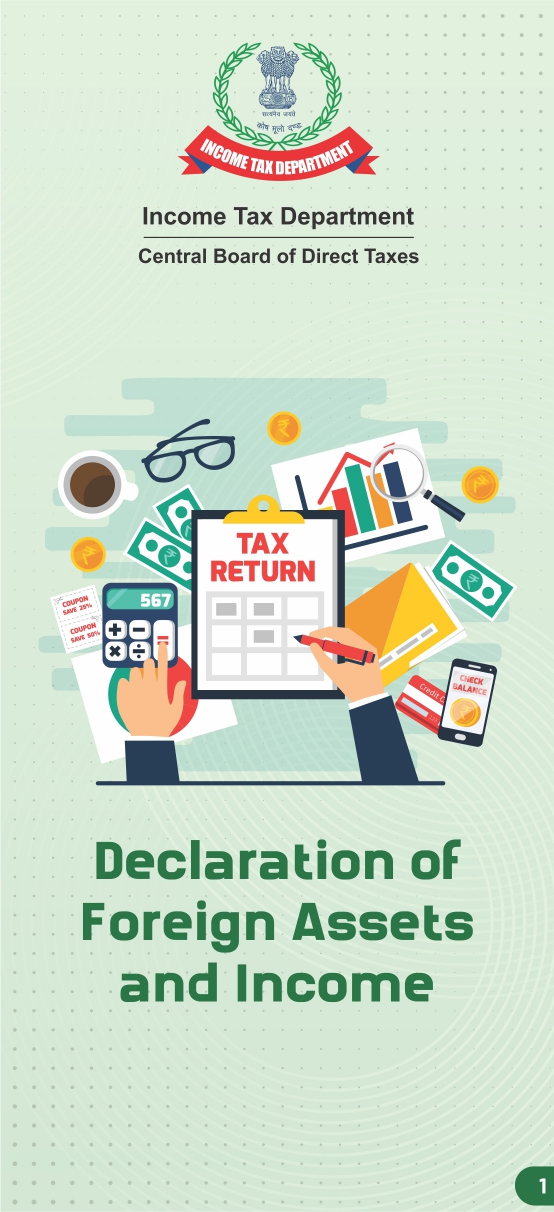


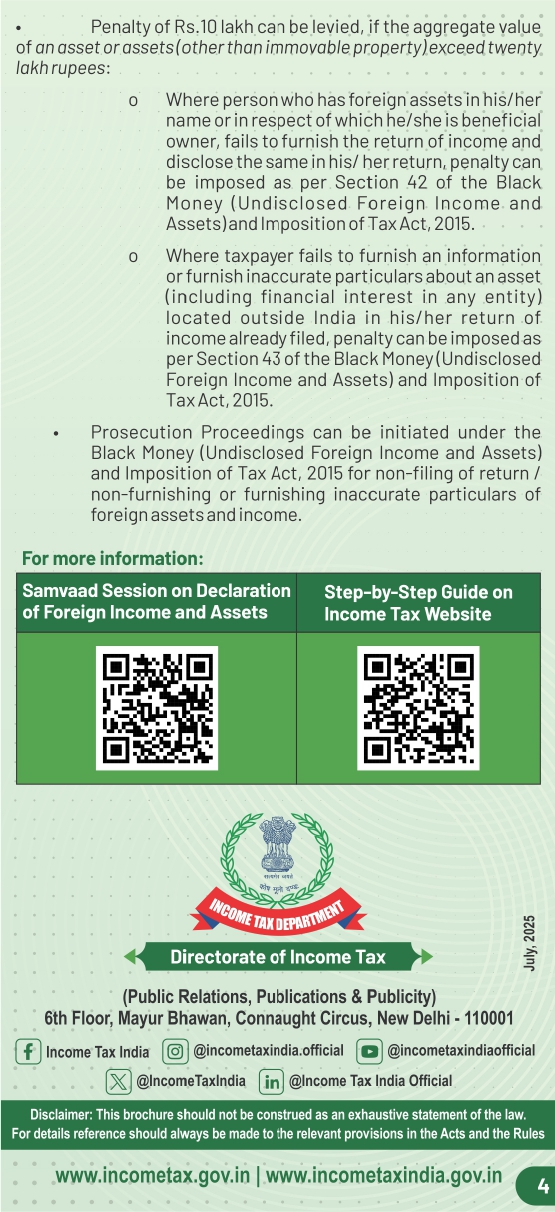

Declaration on Foreign Assets and Income




The Embassy of India, Kuwait, is pleased to inform you that cultural troupes, including dance, music, theatre, etc. may be invited from India to perform in Kuwait with the support of the Indian Council for Cultural Relations (ICCR).
The troupes have on an average 6-8 members. ICCR will bear the cost of international airfare for the artistes. Local accommodation, transportation and food costs will have to be borne by host organisations. All arrangements for performance including venue, audiovisual, lights, etc. will be the responsibility of the local host.
A list of troupes is enclosed. You may indicate your preference along with the dates. The final selection of cultural troupes will be subject to availability.
CLICK TO VIEW THE FUL LIST PDF
We request your esteemed association to kindly convey your interest on or before 5 December 2025 indicating the type of cultural group, the dates and the occasion and the willingness to bear local responsibilities as mentioned in para 2. The Embassy will coordinate with ICCR to find out availability of suitable troupes.
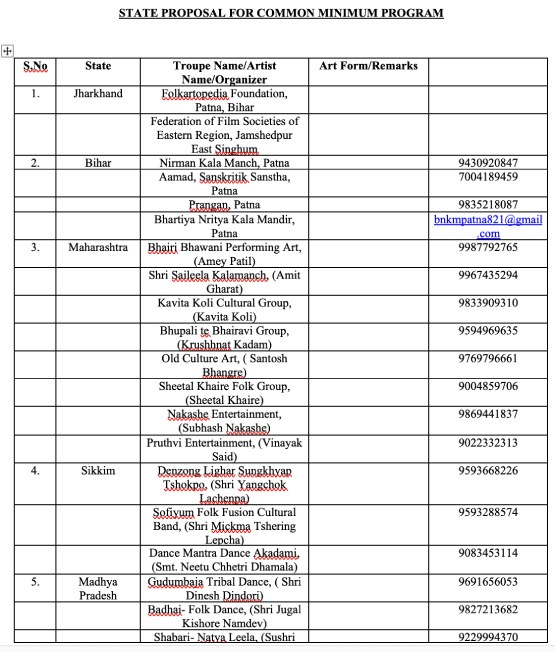
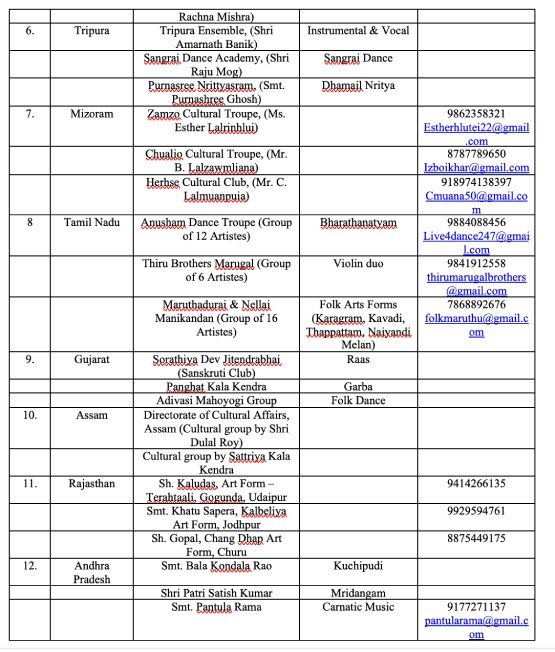
Please contact at your earliest convenience for any questions or clarification.
With regards,
Culture Wing
Embassy of India
Kuwait
India’s Cosmic Leap: A Billion Dreams, Will See Visits to Moon, Mars and Venus
By Pallava Bagla
Reaching for the stars is becoming an everyday affair at India’s space agency, having visited the Moon and Mars with orbital missions, now eyes are set on a mission to Venus and a sample return from the Moon. Human space flight to fly an Indian citizen on an Indian rocket from Indian soil where the countdown will also be by India, is also taking shape fast.
India’s space journey reached new heights with the successful landing of Chandrayaan-3 nearer the Moon’s South Pole on August 23, 2023, making India the first country to achieve this feat. This mission demonstrated ISRO’s capability in precision lunar landing and roving. The Vikram lander even performed a hop experiment, and the propulsion module was later maneuvered into Earth orbit for extended operations 2.
Building on this momentum, ISRO achieved its 100th rocket launch in January 2025, launching a navigation satellite, showcasing India’s indigenous cryogenic engine technology.
The pinnacle came with the July 30, 2025 launch of the nearly $1.3 billion NASA ISRO Synthetic Aperture Radar or NISAR satellite, a joint Indo-US Earth observation mission. Launched aboard India’s GSLV F-16, NISAR features dual-frequency SAR payloads from NASA and ISRO, and will monitor climate change, disasters, and agriculture 5. ISRO Chairman Dr. V. Narayanan hailed it as a symbol of India’s technological leadership and global collaboration, emphasizing the precision and reliability of India’s cryogenic launch systems.
In a landmark achievement for India’s space program, Group Captain Shubhanshu Shukla completed a 20-day mission, including 18 days aboard the International Space Station (ISS), as part of the multinational Axiom-4 mission—dubbed Mission Akash Ganga. This marks India’s first human spaceflight since Wing Commander Rakesh Sharma in 1984. Prime Minister Modi hailed Shukla’s courage and dedication as inspiring a billion dreams.
Launched aboard SpaceX’s Falcon 9, Shukla served as mission pilot and conducted seven India-specific experiments. Despite delays, the mission concluded successfully with a splashdown near San Diego. It lays the foundation for India’s Gaganyaan mission, targeting a 2027 launch from Indian soil.
India’s roadmap doesn’t stop at Gaganyaan, Prime Minister Modi has outlined a bold vision: establish an Indian space station by 2035 and land an Indian on the moon by 2040. If successful, India will join the elite club of nations—Russia, the United States, and China—with independent indigenous human spaceflight capabilities.
India’s lunar legacy is already formidable. India’s first foray to the moon with the Chandrayaan-1 mission in 2008 discovered presence of water molecules on the moon, fundamentally altering lunar geological history forever. Chandrayaan-2 provided the first independent images of Apollo mission artefacts left on the lunar surface, and Chandrayaan-3 made global headlines by landing nearer the moon’s South Pole—now considered the gold rush zone for lunar exploration.
With cost-effective yet reliable space missions, India is poised to become a major player in the global space race. The government has already allocated billions of dollars for the human spaceflight program, underscoring its commitment to cosmic exploration.
India’s science minister Dr Jitendra Singh who also looks after the affairs of the Department of Space says `India’s quantum leap in space research with India’s space economy standing at $8 billion has been only possible due to the courageous decision to open up or unlock the space sector from the shackles of the past.’ Further highlighting that `India’s space economy is projected to grow beyond $40 billion by 2040 which is going to be a gigantic jump’.
The future space missions include lunar sample return mission named Chandrayaan-4; a mission to Venus; the development of the new mighty rocket, as part of this ambitious roadmap, India plans to establish its own space station, the Bhartiya Antariksha Station, by 2035. A precursor to this will be the launch of a space module in 2028. The culmination of this vision is the planned landing of an Indian astronaut on the moon by 2040.
"When we celebrate the 100th year of India’s independence, in 2047, an Indian flag will already be flying on the moon" asserts Dr Singh.
In a historic collaboration between the United States and India, the NASA-ISRO Synthetic Aperture Radar satellite, also known as NISAR, is poised to revolutionise how we observe and understand our planet, it launched successfully on July 30, 2025 from the Satish Dhawan space Center at Sriharikota in southern India. At its core, NISAR is designed to monitor changes in Earth's surface with unprecedented precision, capturing movements as small as a centimetre. This capability is vital for tracking natural hazards such as earthquakes, landslides, volcanic activity, and glacial shifts, as well as human-induced changes like urban expansion, agricultural development, and infrastructure stress.
ISRO says the NISAR satellite weighs 2,392 kg, and it will scan the entire globe and provide all-weather, day-and-night data at a 12-day interval and enable a wide range of applications. NISAR satellite that has cost upwards of $ 1.3 billion to make can detect changes in the Earth's surface, such as ground deformation, ice sheet movement and vegetation dynamics. Further applications include sea and ice classification, ship detection, shoreline monitoring, storm characterisation, changes in soil moisture, mapping and monitoring of surface water resources and disaster response. It has been dubbed a lifesaving satellite.
Today over 250 space start-ups are driving innovation and fuelling India's space sector. Among these, Agnikul Cosmos and Skyroot Aerospace made headlines by launching sub-orbital rockets and Pixxel Aerospace makes unique high resolution satellites.
A recent study estimates that for every dollar spent on space, India has reportedly received a return of $ 2.52. India has end to end capabilities in space, as the country makes its own rockets, satellites and has an enviable space technology applications portfolio. Today India has over fifty operational satellites in space which help power India’s burgeoning economy. India’s vast space ecosystem touches the lives of every Indian.
Pallava Bagla
(Pallava Bagla is an award winning science journalist currently he is Science Editor for New Delhi Television (NDTV) and Co-author of book `Reaching for the Stars’. He can be reached at pallava.bagla@gmail.com )
Digital from India: Leapfrogging development through text-enabled citizen-centric governance
by Amb Debnath Shaw
At the 2nd Voice of the Global South Summit hosted virtually by Prime Minister Shri Narendra Modi on 17th November 2023, one key focus area was on, “Sustain the momentum of exchange and sharing of ideas and best practices between member countries…” At the 3rd Summit also hosted by the Indian PM on 17th August 2024, there was focus on, “…challenges of new technologies and need for South-South Cooperation co-operation for technology transfers…”. Of the four-fold Global Compact put forward by PM Modi one is on technology sharing. Thus, it is clear, that as a responsible voice of the Global South, India is willing to share its knowledge and expertise acquired in governance and other fields, which accelerate development, and is also keen to learn from other nations.
India’s journey in leapfrogging development through tech-enabled citizen-centric governance has been nothing short of transformative. Key milestones in India’s digital governance experience have been:
Digital India Initiative - the flagship programme of the Government of India, launched in 2015, with a vision to transform India into a digitally empowered society and knowledge economy;
Digital Public Infrastructure (DPI) – platforms like Aadhaar (over one billion citizens with a unique digital identity), UPI (with over 18 billion transactions in June 2025), DigiLocker (eliminating the need for physical documents) and e-Sign, have revolutionized service delivery;
Direct Benefit Transfer (DBT) – India became the first country to use DBT at scale, reducing corruption and ensuring timely delivery of welfare benefits; and
AI Integration in Governance – from grievance redressal systems to predictive analytics in healthcare and agriculture, AI is helping tailor services to citizen needs.
Institutional support and strategic vision to India’s Digital Governance is provided by the Digital India Corporation (DIC), under the Ministry of Electronics and Information Technology (MeitY), the National Informatics Centre (NIC), the National Institute of Smart Governance (NISG) and a Digital Brand Identity Manual (DBIM).
The DIC is responsible for establishing the National e-Governance in Accountability, Efficiency, Efficacy and Transparency, to promote digital literacy, accessibility, and inclusion, to develop and empower skilled manpower, to guide ministries/departments in enhancing accessibility and efficiency in public service delivery, and to support the MeitY in all its endeavours.
The NIC integrates emerging technologies like AI, blockchain and data analytics into governance frameworks.
The NISG acts as a strategic partner in implementing digital transformation across central ministries and states, including international collaboration with Global South nations.
DBIM standardizes government websites and applications for a unified citizen-friendly experience.
Impact on Governance and Society
In terms of Transparency and Accountability, E-governance platforms have reduced bureaucratic opacity and increased public trust.
In terms of Efficiency and Accessibility, public services are now available 24/7, with reduced paperwork and faster processing times.
In terms of Inclusivity, AI-driven tools and multilingual platforms ensure services reach marginal communities.
In terms of environmental benefits, the digital processes have led to paperless offices and reduced carbon footprints.
Some of the Programmes and Applications which are noteworthy and have received industry-based awards are:
MyGov.in – a platform to share inputs and ideas on matters of policy and governance, engaging citizens in governance through a “Discuss”, “Do” and “Disseminate” approach
POSHAN Tracker - a mobile-based application used by Anganwadi workers to provide real-time data on the delivery of nutrition and childcare services
DIKSHA (Digital Infrastructure for Knowledge Sharing) is a national platform for school education
AYUSH Information Hub (AIH) has been set up to disseminate all authentic and verified information related to Ayurveda, Yoga, Naturopathy, Unani, Siddha, Sowa-Rigpa and Homoeopathy
UMANG (Unified Mobile Application for New-age Governance), for accessing over 1200 central and state government services in multiple languages, including services such as Aadhaar, DigiLocker, Bharat Bill Payment System, PAN EPFO, PMKVY, AICTE, CBSE, etc,
National AI Portal [INDIAaihttps://indiaai.gov.in/">https://indiaai.gov.in), is the constant and dynamic source of knowledge on AI related topics
Chic-CAD Plus, is an open-source software used by artisans in making 2D designs like embroidery, chikankari, painting work, etc,.
The Digital India Campaign supports other Government of India schemes such as:
BharatNet, - provides broadband connectivity to unserved regions
Make in India – to produce in India for the country and the world
Startup India – aimed at fostering innovation, supporting entrepreneurs and building a robust ecosystem
Industrial Corridors – being developed along new railway and road alignments
Bharatmala - to enhance road connectivity and improve freight and passenger movement through development of highways and economic corridors
Sagarmala - port-led development modernising ports, promoting coastal shipping and boosting maritime activities
Atmanirbhar Bharat, whose aim is to make the country and its citizens independent and self-reliant in all senses. Its five pillars are Economy, Infrastructure, System, Vibrant Demography and Demand
Developed in India – Shared with the World
India ranks high in digital competitiveness among G-20 nations, though challenges remain in data security, cybersecurity and digital literacy. India’s model is now being replicated globally, with the India Stack serving as a blueprint for digital governance in other developing countries.
UPI system is operational in Bhutan, Nepal, Sri Lanka, Mauritius, Singapore and France. It is at various stages of integration in Qatar, Cyprus, Malaysia, Thailand, UK, Oman and Maldives. On 9th July 2025, during PM’s Visit, Namibia became the first country globally to sign a licensing agreement to adopt UPI technology. On 4th July 2025, during his meeting with his counterpart, PM Modi congratulated Trinidad & Tobago on becoming the first Caribbean country to adopt UPI.
Several African nations, Cambodia and the Philippines are keen on replicating India’s DPI deployment and India Stack and are availing of capacity building programmes offered by GOI.
DPI, UPI, AI, Aadhaar, DigiLocker, e-Sign, and other digital governance tools have been the subject of discussion and dialogue at the highest levels with countries across Asia, Africa and Latin America, including Singapore, France, Cyprus, Ghana, Brazil, Bolivia, Paraguay, Uruguay, Cuba, Argentina, Namibia, BIMSTEC partners, and Central Asian countries.
India is committed to sharing its experience and expertise with its global partners, on using technology for governance and growth. India is also keen to learn and assimilate the positive experience of friendly nations in the development of technology, for the welfare and prosperity of its people.
A Decade of the International Day of Yoga (IDY): Yoga for One earth, one Health
Ten years ago, the idea of a global day dedicated to “yoga” might have seemed far-fetched. But here we are—yoga mats unrolled across the globe, from bustling urban parks to silent, icy outposts in Antarctica. The International Day of Yoga (IDY) has become much more: a movement rooted in well-being, connection, and a shared sense of humanity.
The journey to make yoga a global movement started in the year 2014, when our Honorable Prime Minister Shri Narendra Modi addressed the UN General Assembly in September that year. His message was simple and powerful:
"Yoga is an invaluable gift of India’s ancient tradition. It embodies unity of mind and body; thought and action; restraint and fulfillment. It is not about exercise, but to discover the sense of oneness with yourself, the world, and nature." On the directions of our Honorable Prime Minister, India’s permanent representative to the UN moved the resolution in the UN General Assembly on December 11, 2014, to observe June 21st as "International Day of Yoga," which was approved by 177 member states of the United Nations General Assembly (UNGA).
In the resolution, adopted under the agenda of "Global Health and Foreign Policy," the UN General Assembly recognised that yoga "provides a holistic approach to health and well-being". For the wider dissemination of information about the benefits of practicing yoga for the health of the world population, the 21st of June is celebrated every year as International Day of Yoga (IDY) across the globe. The main significance of the UN declaring an "International Day" is to focus the attention of the international community on the topic and to encourage activities among the member states to commemorate the day.
As we celebrate the 11th anniversary of International Day of Yoga, the 2025 theme, "Yoga for One Earth, One Health," brings the message home. It’s a reminder that our health and the planet’s health are deeply intertwined. Yoga embodies the philosophy of holistic well-being – uniting the health of individuals with the health of the society and the planet. The principle of “One World, One Health” emphasizes the interconnectedness of human, animal, and environmental health, echoing the ancient yogic wisdom of unity (Vasudhaiva Kutumbkam – the world is one family). It is a philosophy that tries to foster an understanding that the whole of humanity is one family. It is a social philosophy emanating from a spiritual understanding that the whole of humanity is made of one life energy or Universal Consciousness.
Yoga is a code to connect people with life and to reconnect mankind with nature. It expands our limited sense of self to see our families, societies, and mankind as extensions of our own selves. Yoga is a journey from me to we. Yoga makes an individual a better person in thought, action, knowledge, and devotion. Once an individual develops an interest in yoga and starts diligently practicing it, it will always remain a part of his or her life. Yoga is the entrance point to one’s spiritual journey. By practicing yoga, a spirit of oneness is created—oneness of the mind, body, and intellect. Oneness with our families, with the society we live in, with fellow humans, with all the birds, animals, and trees with whom we share our beautiful planet... this is yoga. Yoga has the potential to herald in a new Yuga (a new era) of peace, compassion, brotherhood, and all-round progress for the human race. Yoga is not only about Asanas. It is much more. It is a blend of Gyan (knowledge), Karma (action), and Bhakti (devotion). Yoga is a symbol of universal aspiration for health and well-being; it is health insurance on a zero budget. Yoga is not only about "Rog Mukti" (eradication of diseases) but also about "Bhog Mukti" (desisting from worldly greed). June 21, 2015, marked the first IDY celebration. In Delhi, nearly 36,000 people, including the Prime Minister, gathered on Rajpath for a mass yoga session. It wasn’t just a moment of national pride—it was the beginning of a global tradition.
Every year, Millions of people across the globe practice yoga, even during COVID-19. The theme was Yoga at Home, Yoga with family, and several people across borders participated in online yoga sessions. The Honorable Prime Minister also encouraged the countrymen to practice yoga during COVID times for community, immunity, and unity. Teleyoga guidelines were also released by the Ministry of Ayush during this year. The scale of participation led to several Guinness World Records, the recent one being around 3 Lakh people doing yoga across a 28 km stretch of beach road in Visakhapatnam, AP, along with our honorable Prime Minister. The scale of celebrations and reach has only grown over the years from the poles to the parks, from far off villages to the bustling urban jungles, from Icy heights of the Himalayas to the deserts, from kids to elderly, from layman to the armed forces yoga is being practiced by all irrespective of race, religion, geographies and age.
This is reflected in the growing participation numbers each year, reaching approximately 25 crore.
IDY is celebrated with different themes each year and innovative campaigns to reach out to the masses. This is celebrated using a whole-of-Government approach wherein all Ministries and Indian Foreign Missions take part in this global campaign. The Guardian ring of yoga starts from the coverage of IDY events across cities from the first Sunrise in the eastern Hemisphere to the last sunrise in the western hemisphere. The Sagar Mala or Ocean Ring of Yoga is a calling to observe yoga at all the seaports among nations friendly to India. The Indian Missions also engage the citizens in their countries on yoga by conducting workshops, IDY Common yoga protocol training, seminars, competitions, etc. to spread the message of yoga.
The International Day of Yoga is now a global movement that spreads the ancient Indian wisdom and culture among the comity of Nations with a call for Health, Harmony, and Well-being. Yoga isn’t just about touching your toes, but is about touching and transforming lives.
Author: Dr Raghavendra Rao M, BNYS, PhD (Yoga & Life Sciences), DSc (Yoga & Life Sciences) Director, Central Council for Research in Yoga and Naturopathy, Ministry of Ayush, Govt of India.
India’s Maritime Vision: from SAGAR to Indo-Pacific to MAHASAGAR
A decade ago, on 12 March 2015, while commissioning in Mauritius the gleaming Offshore Patrol Vessel Barracuda, built in Garden Reach, Kolkata to Mauritian specifications, Prime Minister Modi outlined India’s policy towards the Indian Ocean Region (IOR): SAGAR – Security and Growth for All in the Region. The Indian Ocean, he pointed out, was critical to the future of the world bearing two-thirds of the world’s oil shipments, one third of its bulk cargo and half of its container traffic. The forty states that are on its littoral host nearly 40% of the world’s population.
SAGAR policy emphasized five aspects: safety and security of the Indian mainland and island territories and ensuring a safe, secure and stable IOR; deepen economic and security cooperation with friends in the IOR particularly maritime neighbours and island states through capacity building; collective action and cooperation; seek a more integrated and cooperative future towards sustainable development for all; and increased maritime engagement in the IOR as the primary responsibility for the stability and prosperity of IOR lay with those living in the region. If SAGAR was the external outreach of India, in the national context it was complemented by the Sagarmala port-led development initiative.
For long, India has been criticized for its continental bias, that it was focused on its northern and north west frontiers to the neglect of its vast maritime interests. However, this has been changing. Since the launch of its Look East policy in 1992 which evolved into the proactive Act East policy in 2015, India has reclaimed its maritime legacy. PM Modi recently released a special coin commemorating 1000 years of Emperor Rajendra Chola’s naval achievements.
The Indian navy has been in the forefront of maritime diplomacy through capacity building initiatives, joint exercises, plurilateral conferences, Humanitarian Assistance and Disaster Relief (HADR) and Search and Rescue (SAR) activities. The 2004 Tsunami established India’s credentials in disaster relief operations. India came to be recognized as the first responder and net security provider in the IOR, particularly to states in its neighbourhood. India’s prompt assistance to Myanmar in the aftermath of the devastating Cyclone Nargis in 2008 and being the first country to deliver drinking water to the Maldives after a freshwater crisis in that country in end 2014 consolidated that image. In March, 2025 India mounted a huge relief and rescue Operation Brahma to earthquake hit Myanmar.
India has now graduated to becoming a preferred security partner in the Indo-Pacific region forming defence partnerships that not only include joint exercises and capacity building but also exports of defence equipment either as a grant or under a defence Line of Credit at the request of the partner state.
Trilateral maritime security cooperation with Sri Lanka and Maldives which began in 2011, has extended to other Indian Ocean states including Mauritius and Bangladesh with Seychelles as observer under the Colombo Security Conclave that now has a charter and a secretariat in Colombo. The Indian Ocean Naval Symposium (IONS) which began as an initiative of the Indian navy in 2008 is an inclusive platform to discuss maritime issues and to work out effective response mechanisms. IONS has 25 participating countries from South Asia, West Asia, Africa, southeast Asia and European countries with Indian Ocean territories as well as nine observers and a rotating chair (India will take over as chair, at the end of 2025). MILAN is a biennial multinational exercise hosted by Indian navy in harmony with India’s vision of SAGAR and Act East policy.
A crucial facet of maritime security is enhanced maritime domain awareness. Towards this, India has also been pursuing white shipping agreements with several countries (22 have been concluded till now) and established a state-of-the-art Information Fusion Centre (IFC – IOR) in Gurugram that facilitates sharing of maritime information among member states.
India has a long history of development partnership going back to the period prior to its Independence. Its approach to development partnership has been shaped by its independence struggle, solidarity with other colonized and developing countries and the inspiring leadership of Mahatma Gandhi who declared that “my patriotism includes the good of mankind in general”. It is thus that India has been sharing its developmental experiences and technical expertise in a spirit of Vasudhaivakutumbakam ( the ancient belief that the World is One Family). As PM Modi stated in his address to the Ugandan Parliament in 2018, “Our developmental partnership will be guided by your priorities, it will be on terms that will be comfortable for you, that will liberate your potential and not constrain your future…” The Indian model of developmental cooperation is comprehensive and involves multiple instruments including grant-in-aid, concessional lines of credit, capacity building and technical assistance. Above all, it is unconditional, transparent, sustainable and financially viable.
In June, 2018 at the Shangri La conference, PM Modi outlined India’s Indo-Pacific vision. For India, the Indo-Pacific stands for a free, open, inclusive region that “embraces us all in a common pursuit of progress and prosperity”. He emphasized ASEAN centrality, a rules-based order, freedom of navigation, unimpeded commerce and peaceful settlement of disputes in accordance with international law. There is great synergy between the Indian approach and the ASEAN Outlook on the Indo-Pacific. In November 2019 at the East Asia Summit in Bangkok, India launched the Indo-Pacific Oceans Initiative (IPOI) a coherent initiative comprising seven pillars of practical cooperation built on the SAGAR vision. India’s active participation in the QUAD (Australia, India, Japan and US) is part of our Indo-Pacific vision. Earlier, in 2014, India established FIPIC (Forum for India-Pacific Islands Cooperation), a strategic initiative for strengthening diplomatic and economic engagement with islands in the Pacific ocean.
It was in 2023, during India’s presidency of G-20, whose leitmotif was inclusivity, that the African Union was invited to join the grouping. India’s presidency, inter alia, revived multilateralism, amplified the voice of the global south and championed development. India has hosted three editions of the Voice of the Global South summit since then.
Ten years after SAGAR, during an official visit to Mauritius in 2025, PM Modi announced MAHASAGAR (Mutual and Holistic Advancement for Security and Growth Across Regions), an updated doctrine. If SAGAR is the sea, then MAHASAGAR denotes ‘ocean’ in Hindi and several other Indian languages. MAHASAGAR marks a strategic evolution from a regional focus on the Indian Ocean to a global maritime vision, with particular emphasis on the global south. PM Modi’s recent engagements with Mauritius, Maldives, Trinidad and Tobago, Ghana and now the Philippines are aligned with the MAHASAGAR vision.
****
By Suchitra Durai
Former Ambassador of India to Thailand
Petroleum Minister Government of India Hardeep Singh Puri Met HE Tareq Sulaiman Al-Roumi, Kuwaiti Minister of Oil and Chairman kpc
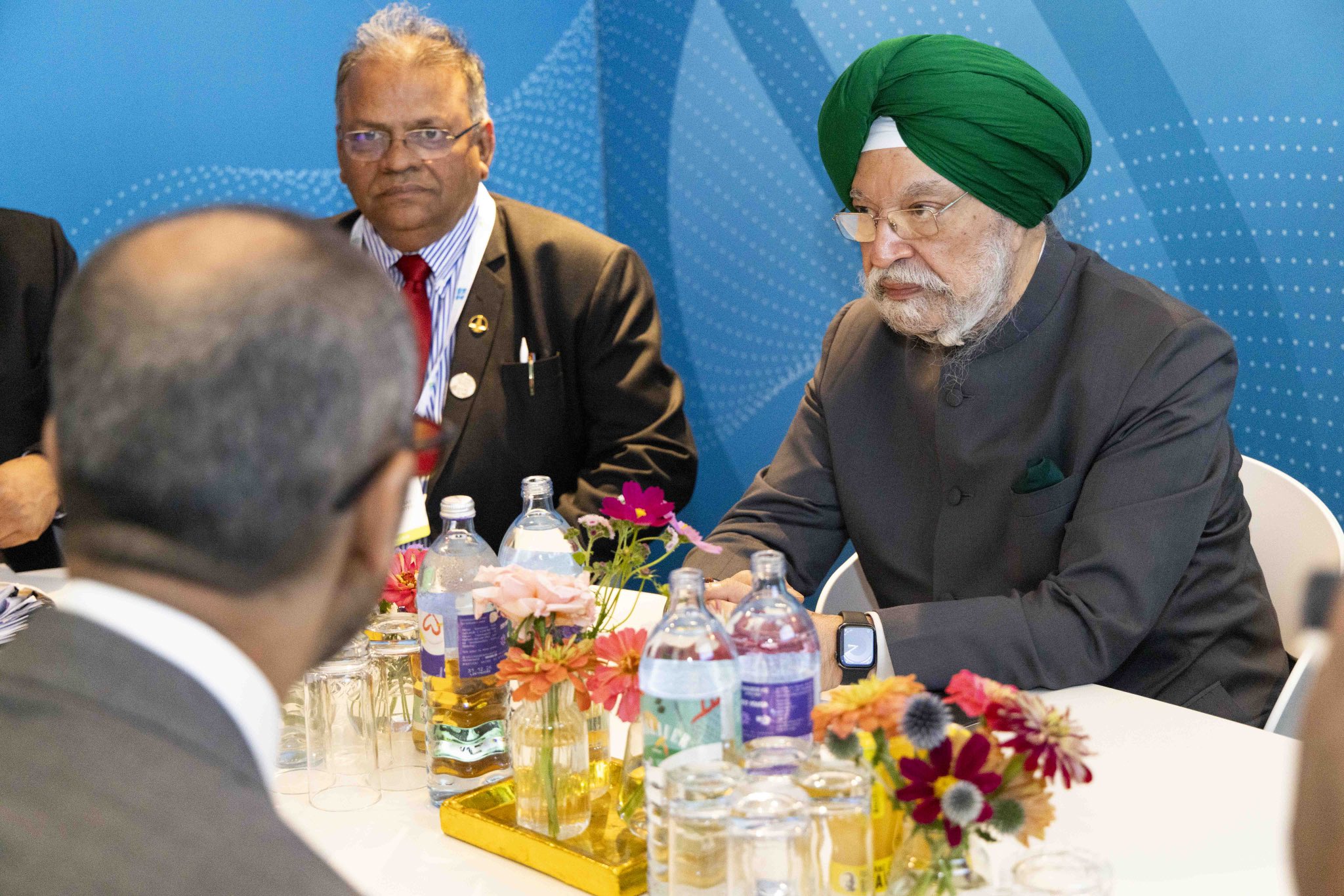
Petroleum Minister Government of India Hardeep Singh Puri Met HE Tareq Sulaiman Al-Roumi, Kuwaiti Minister of Oil and Chairman kpc official kwait at the 9th OPEC International Seminar in Vienna today, we discussed ways to further bolster our existing association. Kuwait is the 6th largest source of crude oil, 4th largest source of LPG and 8th largest hydrocarbon trade partner for India.
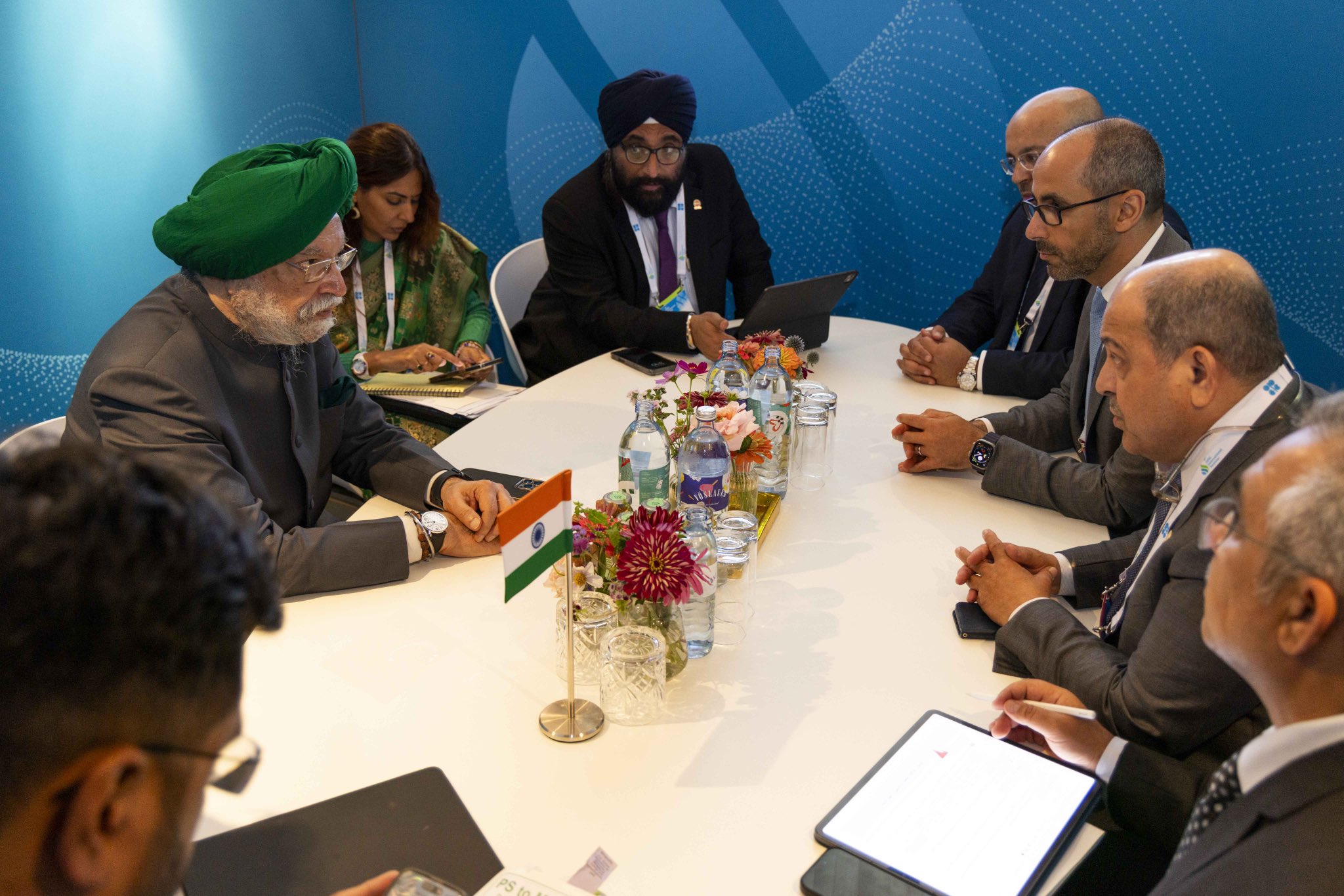
The Leader Who Keeps his Word
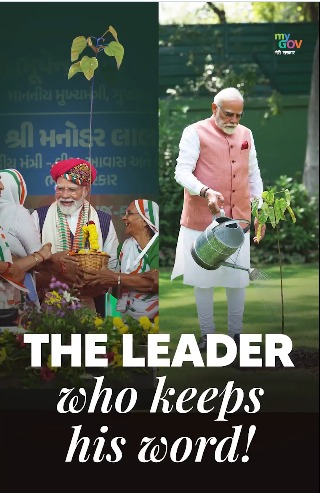
On WorldEnvironmentDay, PM Narendramodi planted the sindoor sapling gifted by 1971 war heroes — a gesture rooted in respect, remembrance, and responsibility.
ONE NATION ONE MISSION
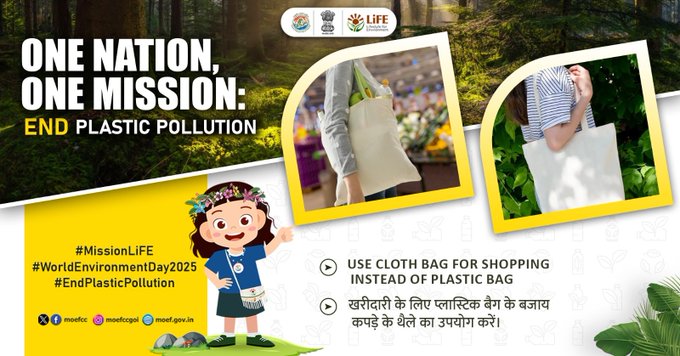
Make a smart, eco-friendly switch by carrying a cloth bag every time you shop. It replaces countless plastic bags that harm our planet. A reusable bag is not just a habit—it’s a statement of responsibility.
Visit of the All-Party Delegation from India to Kuwait (26-27 May 2025)
The All-Party Delegation from India, led by Hon’ble Member of Parliament Shri Baijayant Jay Panda, comprising serving Members of Parliament, former Minister and former Foreign Secretary of India, will be visiting Kuwait from 26 to 27 May 2025 as part of a diplomatic outreach aimed at projecting India’s united and unwavering stance against terrorism in all its forms and manifestations.
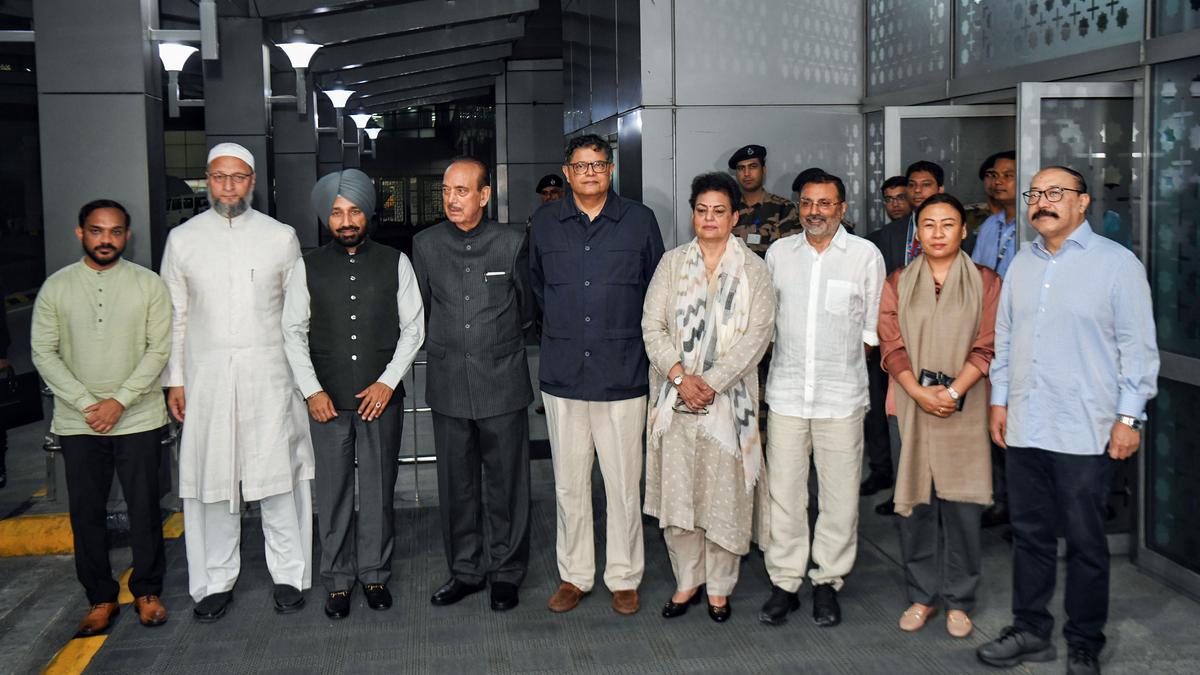
The following are members of the delegation:
i) Shri. Baijayant Jay Panda, Hon’ble Member of Parliament, Lok Sabha; former Member of Parliament (Rajya Sabha)
ii) Dr. Nishikant Dubey, Hon’ble Member of Parliament (Lok Sabha),Chairman, Committee on Communications and Information Technology
iii) Smt. S Phangnon Konyak, Hon’ble Member of Parliament (Rajya Sabha), first woman to be elected as Member of Rajya Sabha from Nagaland.
iv) Smt. Rekha Sharma, Hon’ble Member of Parliament (Rajya Sabha), former National Chairperson of the National Commission for Women
v) Shri. Asaduddin Owaisi, Hon’ble Member of Parliament (Lok Sabha), President of the All India Majlis-e-Ittehadul Muslimeen
vi) Shri. Satnam Singh Sandhu, Hon’ble Member of Parliament (Rajya Sabha), Founder Chancellor, Chandigarh University
vii) Shri. Ghulam Nabi Azad, Former Union Minister of Health and Family Welfare, former Chief Minister, Former Member of Parliament (Rajya Sabha) and
viii) Shri. Harsh Vardhan Shringla, Former Foreign Secretary, former Ambassador to United States, Bangladesh & Thailand
During the course of their stay in Kuwait, the delegation will be interacting with senior dignitaries from Government of Kuwait, prominent members of civil society, influencers, think-tanks, media and a cross-section of Indian diaspora.
******************
Embassy of India, Kuwait invites application from suitable candidates for the local post of Local Clerk in the Embassy.
Job Description:
Required Qualifications:
Additional Requirements:
Pay Scale: 500-15-725-22-945-28-1225
Location: Embassy of India, Kuwait
To apply: Interested candidates are invited to submit a covering letter, Curriculum Vitae (CV), and a valid Civil ID/Resident Permit. Please email your application to admnkuwait@mea.gov.in with the subject line: "Application for the post of Local Clerk" The deadline for submission is 12th May 2025.
Ambassador AdarshSwaika called on H.E Tareq Sulaiman Ahmad Al-Roumi, Minister of Oil of Kuwait.

Ambassador AdarshSwaika called on H.E Tareq Sulaiman Ahmad Al-Roumi, Minister of Oil of Kuwait. Discussions focused on strengthening bilateral cooperation in the entire value chain of hydrocarbon sector between
AMBASSADOR’S SPEECH FOR REPUBLIC DAY RECEPTION 29 January 2025
 H.E Dr Mahmoud Abdulaziz Bushahri, Minister of Electricity, Water and Renewable Energy of the State of Kuwait and Chief Guest of today’s event,
H.E Dr Mahmoud Abdulaziz Bushahri, Minister of Electricity, Water and Renewable Energy of the State of Kuwait and Chief Guest of today’s event,
Dignitaries from the State of Kuwait,
Ambassadors, High Commissioners and members of diplomatic corps,
Friends from media,
Excellencies, Ladies and Gentlemen,
Namaskar! Good evening! Mas’aa Al-Kheir!
A very warm welcome to all of you for joining us today to celebrate the 76th Republic Day of India. My special thanks to H.E Dr Mahmoud Abdulaziz Bushahri, the Minister of Electricity, Water and Renewable Energy for gracing the occasion.
At the outset, I express gratitude to His Highness the Amir of the State of Kuwait Sheikh Meshal Al-Ahmad Al-Jaber Al-Sabah, His Highness the Crown Prince Sheikh Sabah Khaled Al-Hamad Al-Sabah, and His Highness the Prime Minister Sheikh Ahmad Abdullah Al-Ahmad Al-Sabah for their patronage and support for a strong India-Kuwait partnership.
 Distinguished Guests,
Distinguished Guests,
26 January 2025 marked the 75th anniversary of our Republic Day, the day when the Constitution of India was adopted. In the 75 years that have passed, India has been able to achieve to a large extent the promises that we made ourselves to the Constitution. This envisaged securing justice, liberty, equality and equity to all its citizens. And while it advanced the progress and prosperity of our nation, it also strengthened the unity and integrity of our country. We have been able to do this in a democratic framework drawing from the pluralistic and consultative social fabric of our society.
 Excellencies & Distinguished Guests
Excellencies & Distinguished Guests
In line with the vision of Hon’ble Prime Minister of India H.E Narendra Modi to make India a developed nation by 2047, we have embarked on this journey with strong conviction and in the backdrop of our past achievements. The Indian developmental story therefore continues to attract the attention of the international community. I would like to highlight some important facets of today’s India -
 Distinguished guests
Distinguished guests
When it comes to Indian foreign policy, it is a reflection of our ancient philosophy of ‘Vasudhaiva Kutumbakam’ meaning ‘the world is one family’. We have consistently supported peaceful resolution of conflicts through dialogue and diplomacy. We are privileged to speak for the global south and have been a reliable development partner for them. India has also been a first responder in times of crises for them and for others. Our two yardsticks of foreign policy are national interest and global good, which is reflected in our range of memberships in multilateral and plurilateral groupings from Quad to BRICS to SCO to BIMSTEC and so on. In recent years, India has championed many pro-planet global initiatives with like-minded countries, including the International Solar Alliance of which Kuwait recently became a signatory, Coalition for Disaster Resilient Infrastructure and the Global Bio-Fuels Alliance. Indian foreign policy is, in essence, designed to foster closer global cooperation and understanding.
Ladies and Gentlemen,
Our bilateral relations with the State of Kuwait are indeed historical and time-tested. Bilaterally and multilaterally, there is a good understanding of each other’s interests. The historic and successful visit of Prime Minister of India H.E Narendra Modi to Kuwait in December 2024 has opened a new chapter in our bilateral relations with Kuwait. We convey our deepest appreciation to His Highness the Amir of Kuwait for his kind gesture of conferring the highest national award of Kuwait ‘The Order of Mubarak Al-Kabeer’ on Hon’ble Prime Minister of India. One of the most substantive outcomes of the visit was the elevation of our bilateral relations with Kuwait to that of a ‘Strategic Partnership’. Another significant outcome was the signing of the MoU on Defence Cooperation. Our trade and investment ties continue to grow, with India being one of the top trading partners of Kuwait. Many Indian companies are executing infrastructure projects in Kuwait and many Indian products and services are available in Kuwait. The Tata Motors owned Range Rover and Jaguar cars on display in the foyer are an example. Similarly, there are many Kuwaiti businesses which are deeply entrenched in the Indian business eco-system. Our investor-friendly regime and high-growth economy awaits to welcome more. The number of Indians who call Kuwait their second home has crossed 1 million now. These numbers speak of the warmth and cordiality of our relations. We look forward to greater engagement with Kuwait, both at Government and people-to-people level, in the coming times. We are also confident that India-GCC relations will be further strengthened under Kuwait’s GCC Presidency.
I will now like to say a few words in Hindi for members of the Indian community present here.
Distinguished members of the Indian community
You continue to be the vital and living bridge of our relations with Kuwait. As we look forward to greater cooperation with Kuwait, your role will also grow in equal measure. I can share with you that the leadership of Kuwait conveyed very positive sentiments to Hon’ble Prime Minister about your contribution to the development of Kuwait and their expectation of your similar role in future.
Friends,
Before concluding, I also wanted to share an important recent development in India-Kuwait relations. For the first time, Government of India has awarded one of its highest civilian awards ‘Padma Shri’ to a Kuwaiti national, Sheikha Shaikha Ali Jaber Al-Sabah for her role in promoting yoga in Kuwait and the region. This was announced on the eve of this Republic Day. My heartiest felicitations to Shaikha A J Al-Sabah on this recognition, who is present here today with us.
Let me also take this opportunity to thank all stake-holders who are playing such a key role in taking India-Kuwait relationship to greater heights. I thank you all once again for your august presence today and, in particular, the Hon’ble Minister of Electricty, Water and Renewable Energy. And last but not the least, my Embassy team for making today’s event possible.
Long live India-Kuwait friendship!
Haiya Asadaqa alhindia – alkuwaytiya lil abad
Thank you
Embassy of India
Kuwait
Conferment of Padma Shri award on Sheikha Shaikha A J Al-Sabah

1, The Government of India conferred the prestigious ‘Padma Shri’ award on Sheikha Shaikha Ali Al-Jaber Al-Sabah of Kuwait on 25 January 2025 for her efforts in promoting Yoga in Kuwait and the region. She is the first Kuwaiti national to receive a Padma award and among the select 8 international recipients of Padma Shri this year.
2. Padma Shri award is one of the highest civilian Awards of India and is awarded for distinguished service in any field. The Award is given in various disciplines/ fields of activities, viz.- art, social work, public affairs, science and engineering, trade and industry, medicine, literature and education, sports, civil service, etc. The award is traditionally announced on the occasion of the Republic Day of India. The Award is conferred by the President of India at ceremonial functions which are held at Rashtrapati Bhawan usually around March/ April every year.
3. Shaikha A J Al-Sabah is credited with the inception of the first licensed yoga studio in Kuwait. The studio named ‘Daratma’ combines Arabic word ‘Dar’ (home) with Sanskrit word ‘Atma’ (soul) thus epitomising a deep connection with India. She has been a pioneer in the field of yoga education in Kuwait. She is also the Co-founder of Shems Youth Yoga in Kuwait. Due to her efforts, the Ministry of Commerce & Industry of Kuwait introduced Yoga education license in Kuwait which is now accessible to all. Her contributions have also played a key role in promoting yoga within the region.
4. Hon’ble Prime Minister of India Shri Narendra Modi met Shaikha A J Al-Sabah during his visit to Kuwait in December, 2024 and conveyed his deep appreciation for her stellar efforts. It may be noted that based on Hon’ble Prime Minister Shri Narendra Modi’s proposal of a ‘Yoga Day’ in his address to the UN General Assembly in September 2014, the resolution on ‘International Day of Yoga’ piloted by India was co-sponsored by 177 countries, including Kuwait and adopted unanimously by the UN General Assembly. Since 2015, the world celebrates the International Day of Yoga on 21 June every year. The Indian Embassy in Kuwait has been organizing the International Day of Yoga in Kuwait on 21 June every year.
28 January 2025
Kuwait
***
Ambasdoor AdarshSwaika met with Commodore Sheikh Mubarak Ali Yousef Al-Sabah, Director General of Coast Guard of Kuwait

Ambasdoor AdarshSwaika met with Commodore Sheikh Mubarak Ali Yousef Al-Sabah, Director General of Coast Guard of Kuwait. Discussions focussed on bilateral cooperation between the Coast Guards of in the context of recent MoU on Defence cooperation.

Warm welcome to FM Abdullah Ali Al-Yahya MoFAKuwait as he arrives in India on an official visit.

The Embassy of India, Kuwait organized an awareness session
 1. The Embassy of India, Kuwait organized an awareness session for the representatives of the Indian community members on the Kuwait Labour Laws pertaining to Private and Domestic Sector on 27 November 2024 at the Indian Embassy.
1. The Embassy of India, Kuwait organized an awareness session for the representatives of the Indian community members on the Kuwait Labour Laws pertaining to Private and Domestic Sector on 27 November 2024 at the Indian Embassy.
2. During the session, Representatives from Public Authority of Manpower (PAM) and Domestic Labour Office (DLO) namely (i) Ms Maha Al Azmi, Senior Investigator, PAM; (ii) Nasser Al Kandari, Senior Investigator, DLO; (iii) Dr Adnan Al Beloushi, Senior Investigator, DLO; and (iv) Mr Aydh Al Rashidi, Senior Investigator, DLO briefed the gathering about various of the labour laws of Kuwait dealing with private sector and domestic sector and held an interactive Q&A session with the audience.
3. The gathering consisted of Human Resource Managers from major Kuwaiti companies, recruiting agents and representatives of major Indian Community Associations in Kuwait. Addressing the session, Ambassador H.E. Dr. Adarsh Swaika urged the Indian workers in Kuwait to follow and adhere to the laws, rules and regulations of the host Government. A presentation was also made by the Embassy’s First Secretary (Community Welfare & Labour) outlining various aspects relevant to Indian workers in Kuwait.
Ambassdor AdarshSwaika called on H.E. Abdulrahman Baddah Al-Mutairi, Minister of Information & Culture and MoS Youth Affairs of Kuwait

Ambassdor AdarshSwaika called on H.E. Abdulrahman Baddah Al-Mutairi, Minister of Information & Culture and MoS Youth Affairs of Kuwait. Discussed proposals and sought his guidance to further strengthen cooperation between and in #media, #information and #cultural domain.

Inauguration of website of Pravasi Bharatiya Divas 2025 by Hon’ble External Affairs Minister of India and Hon’ble Chief Minister of Odisha

Embassy will be organising the live telecast of inauguration of website of Pravasi Bharatiya Divas 2025 by Hon’ble External Affairs Minister of India and Hon’ble Chief Minister of Odisha on 12 Nov at 1430 hrs at the Embassy. All Indian nationals are welcome to join.
Optional Service at Indian Consular Application Centres

| © 2020 iflkuwait.com | Powered By AgniSoftwares - USA | Contact Us | Disclaimer |